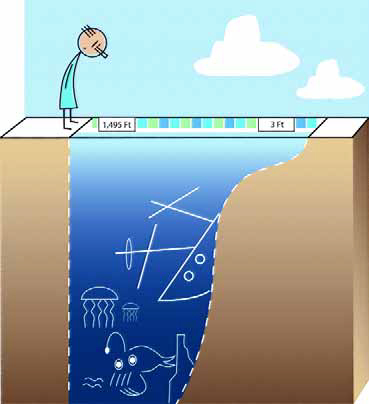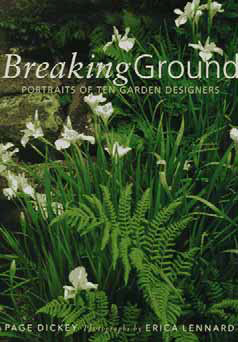ARTICLES
Advance Search
Aquatic Health
Aquatic Health, Fitness & Safety
Around the Internet
Aquatic Culture
Aquatic Technology
Artful Endeavors
Celebrity Corner
Life Aquatic
Must-See Watershapes
People with Cameras
Watershapes in the Headlines
Art/Architectural History
Book & Media Reviews
Commentaries, Interviews & Profiles
Concrete Science
Environment
Fountains
Geotechnical
Join the Dialogue
Landscape, Plants, Hardscape & Decks
Lighter Side
Ripples
Test Your Knowledge
The Aquatic Quiz
Other Waterfeatures (from birdbaths to lakes)
Outdoor Living, Fire Features, Amenities & Lighting
Plants
Ponds, Streams & Waterfalls
Pools & Spas
Professional Watershaping
Structures (Editor's Notes)
Travelogues & History
Water Chemistry
WaterShapes TV
WaterShapes World Blog
Web Links
Around the Internet
Aquatic Culture
Aquatic Technology
Artful Endeavors
Celebrity Corner
Life Aquatic
Must-See Watershapes
People with Cameras
Watershapes in the Headlines
It's a tale of two visions. One contingent in the family wanted a formal, architectural pool that would reflect the geometry of the home. The other wanted to borrow the natural look of the lake and rock formations that flowed down the sloping backyard. Such divergent themes are generally difficult to blend into a coherent design, but I managed to do it with a little help from some friends. The project, which involves placing a formal, geometric pool atop a formation of artificial rock that looms over a grotto and lagoon-like pool below, is still under construction at this writing. At this point, I'd have to say that the results should be just as spectacular as the design process was arduous. My company is based in Raleigh, N.C., which, although it is hardly a backwater, is not exactly at the epicenter of watershape design or construction expertise. To integrate this diverse clutch of elements, I felt a need to
The art of watershaping so often is all about the art of finishing. Certainly, every stage of any project is important, but the final steps leading to completion are what make most designs come to life. The project pictured here, which I've covered in five of my "Details" columns during the past couple years, has been an undertaking of extraordinary scale and mammoth complexity. As I mentioned frequently in those columns (November 2003, January and February 2004 and January and February 2005), the lion's share of the project management fell to my east coast partner and dear friend Kevin Fleming, who truly has endured a baptism of Tisherman-style fire as he
The art of watershaping so often is all about the art of finishing. Certainly, every stage of any project is important, but the final steps leading to completion are what make most designs come to life. The project pictured here, which I've covered in five of my "Details" columns during the past couple years, has been an undertaking of extraordinary scale and mammoth complexity. As I mentioned frequently in those columns (November 2003, January and February 2004 and January and February 2005), the lion's share of the project management fell to my east coast partner and dear friend Kevin Fleming, who truly has endured a baptism of Tisherman-style fire as he
Bridges have been important to humanity for thousands of years. They've provided avenues of travel between disconnected spaces and have, as a result, been critical to commerce, settlement, warfare, travel and even poetry and literature. To this day, they are iconic in certain cities or regions (think Paris or New York), and there has always been a distinctly romantic air that accompanies their obvious utility. My relationship with bridges in general (and with wooden bridges in particular) began during my childhood near Nebraska's Niobrara River. The big, load-bearing structures crafted to span that river in the late-19th and early-20th centuries absolutely fascinated me. I'd spend hours climbing on those old structures and was amazed by the way they creaked as their tension and compression members supported truly formidable weights. At the same time, I came to value the presence of
Bridges have been important to humanity for thousands of years. They've provided avenues of travel between disconnected spaces and have, as a result, been critical to commerce, settlement, warfare, travel and even poetry and literature. To this day, they are iconic in certain cities or regions (think Paris or New York), and there has always been a distinctly romantic air that accompanies their obvious utility. My relationship with bridges in general (and with wooden bridges in particular) began during my childhood near Nebraska's Niobrara River. The big, load-bearing structures crafted to span that river in the late-19th and early-20th centuries absolutely fascinated me. I'd spend hours climbing on those old structures and was amazed by the way they creaked as their tension and compression members supported truly formidable weights. At the same time, I came to value the presence of
When we work in public settings, the basic demand on lighting designers is for straightforward fixture layouts capable of providing enduring effects and requiring minimal ongoing attention. That doesn't sound particularly exciting - and it's not, unless the lighting designer uses it as a baseline and reaches above and beyond.Parks, plazas, resorts and historical sites (among many others) are all spaces that really should come alive at night, but their lighting designs often run counter to that vitality by being so utilitarian that they spark boredom rather than energy. It's easy to understand why this happens: Because such spaces play host to high levels of traffic and often multiple uses, they demand lighting treatments that
When we work in public settings, the basic demand on lighting designers is for straightforward fixture layouts capable of providing enduring effects and requiring minimal ongoing attention. That doesn't sound particularly exciting - and it's not, unless the lighting designer uses it as a baseline and reaches above and beyond.Parks, plazas, resorts and historical sites (among many others) are all spaces that really should come alive at night, but their lighting designs often run counter to that vitality by being so utilitarian that they spark boredom rather than energy. It's easy to understand why this happens: Because such spaces play host to high levels of traffic and often multiple uses, they demand lighting treatments that
If ever there was an example of the power of simplicity, it's been the rise of what we call floating-granite-ball fountains. They've been around since the early 1990s and are now found in a range of commercial and even residential settings. I hadn't ever seen one when I joined HydroDramatics back in 1996, but I do know that soon after I started we began receiving a steady flow on inquiries about them - and it wasn't long before we received our first commission for a floating sphere for a major automobile manufacturer in Detroit. As has been the case every time a prospect has asked about one of these fountains since then, school administrators wanted
If ever there was an example of the power of simplicity, it's been the rise of what we call floating-granite-ball fountains. They've been around since the early 1990s and are now found in a range of commercial and even residential settings. I hadn't ever seen one when I joined HydroDramatics back in 1996, but I do know that soon after I started we began receiving a steady flow on inquiries about them - and it wasn't long before we received our first commission for a floating sphere for a major automobile manufacturer in Detroit. As has been the case every time a prospect has asked about one of these fountains since then, school administrators wanted
It's no exaggeration to say that landscape design, whether residential or commercial, is in something of a rut these days. Nor is it saying anything new. Even in settings separated by great distance - a planned community in Plano, Texas, for example, compared to one in Toms River, N.J. - you'll find almost the exact same hardscape and planting treatments. There's just an incredible homogeneity in design these days. If you find yourself depressed by that predictability (or are stuck in those creative doldrums yourself), I strongly recommend picking up a copy of Breaking Ground: Portraits of Ten Garden Designers (Artisan, a division of Workman Publishing, 1997). Written by Page Dickey, this heavily illustrated 208-page text treats us to insightful and intimate looks at a set of extraordinarily diverse


















